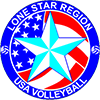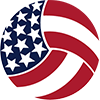Lone Star Region Volleyball Referee Exam
For the purpose of this test use the following information:
| R = RECEIVING TEAM | S = SERVING TEAM | |
| R1 = RIGHT BACK | S1 = RIGHT BACK | |
| R2 = RIGHT FRONT | S2 = RIGHT FRONT | |
| R3 = CENTER FRONT | S3 = CENTER FRONT | |
| R4 = LEFT FRONT | S4 = LEFT FRONT | |
| R5 = LEFT BACK | S5 = LEFT BACK | |
| R6 = CENTER BACK | S6 = CENTER BACK |
DIRECTIONS: Read each situation carefully. Decide whether the statement is true (T) or false (F). Select either True or False, then click NEXT to go to the next question. Assume no other conditions exist except those specifically mentioned in the question.
For the purpose of this test use the following information:
| R = RECEIVING TEAM | S = SERVING TEAM | |
| R1 = RIGHT BACK | S1 = RIGHT BACK | |
| R2 = RIGHT FRONT | S2 = RIGHT FRONT | |
| R3 = CENTER FRONT | S3 = CENTER FRONT | |
| R4 = LEFT FRONT | S4 = LEFT FRONT | |
| R5 = LEFT BACK | S5 = LEFT BACK | |
| R6 = CENTER BACK | S6 = CENTER BACK |
DIRECTIONS: Read each situation carefully. Decide whether the statement is true (T) or false (F). Select either True or False, then click NEXT to go to the next question. Assume no other conditions exist except those specifically mentioned in the question.


